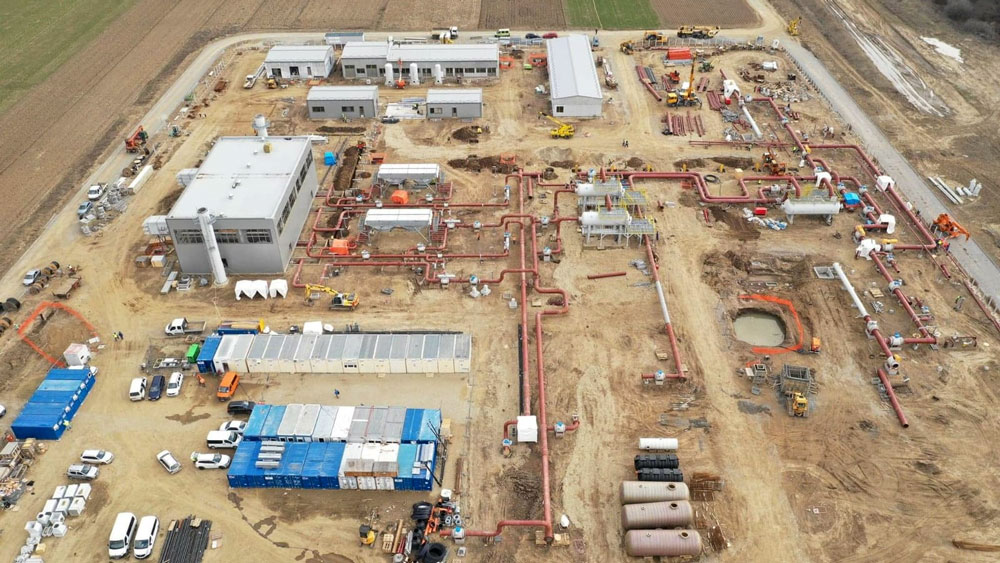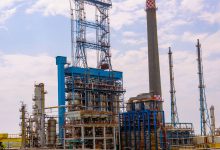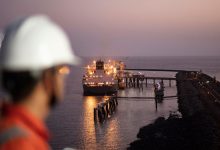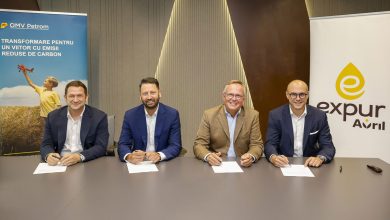SNTGN Transgaz’s Plans and Forecasts for the Next Decade
SNTGN Transgaz, which pays quarterly a royalty of 10% of revenues achieved from domestic and international gas transmission activities, has made public the Plan for the Development of the National Gas Transmission System for the period 2020-2029. The plan is in public debate until May 29 this year, in accordance with the provisions of Directive 2009/73/EC of the European Parliament and of the Council concerning common rules for the internal market in natural gas.
In what follows, we will present some of the plans and forecasts for the following decade, which will have a major influence, both for the domestic market and in regional context.
Regarding gas pipelines and gas transmission connections, out of the 13,430 kilometres in operation by the national transmission operator, about 76% have an effective service life higher than 20 years, close to their normal service life. However, their technical state remains at an appropriate level as a result of the fact that the operating activity is carried out in the context of a maintenance system mainly preventive, planned, corrective and it is supported by annual investment programs for development and upgrade.
The domestic and international gas transmission capacity is ensured through the network of gas pipelines and supply connections with diameters between 50 mm and 1,200 mm. The compression capacity is provided by 5 gas compressor stations, located on the main transmission directions and which have an installed power of around 46 MW, with a maximum compression capacity of 1,180,000 Ncm/h, i.e. 28,320,000 Ncm/day. Two of the 5 compressor stations, GCS Onesti and GCS Silistea, entered an upgrade program, which involves the replacement of the existing compressor aggregates and of the related technological facilities. Until the completion of the upgrade process, the two compressor stations will not be operational.
Out of the 1,233 gas regulating and metering stations (1,233 metering directions), 948 are integrated into an automatic control and monitoring system, SCADA. All these components of the NTS provide the takeover of natural gas from producers/suppliers and its transmission to consumers/distributors or the storage facilities.
Situation of countries in the region
All the information about the gas markets of the neighbouring countries indicate a significant reliance thereof on imported natural gas sources. While until recently for all these countries natural gas of Russian origin represented the only source of supply, currently, by planning and implementing new infrastructure projects the neighbouring countries are seeking their diversification for the obvious purpose of increasing gas supply security and, not least, ensuring price competitiveness.
The focus of the operators of the gas transmission systems in the neighbouring countries on creating new cross-border transmission capacities or the enhancement of the existing ones clearly proves the concern for a significant increase in the degree of interconnection in a part of Europe where there is still a lot to be done for a perfectly integrated market:
- Ukraine has achieved reverse flow with Hungary and implemented the project for ensuring reverse flows with Slovakia; it is important to highlight the interest shown by Ukraine for both physical reverse flow in the interconnection points with the Romanian system and especially in Isaccea 1 point, thus being able to ensure gas supplies coming from south-east through the Bulgarian transmission system and Line I of international gas transmission;
- Hungary has planned investments for the development of gas transmission capacities in the east and the west of the country, but also pays a special attention to the implementation of a north-south corridor, ensuring the link between Slovakia and Croatia;
- Serbia will benefit from interconnection with Bosnia, Herzegovina, Bulgaria and Romania;
- In turn, Bulgaria takes steps to build the Greece-Bulgaria interconnector and a new interconnection with Turkey, to be able to benefit from gas from the Caspian region and LNG from the LNG terminals in Greece, in order to transport it to the Central-European markets.
Romania has the lowest dependence on imports
In all this picture, Romania is the country with the market least dependent on imported gas. Besides its favourable geostrategic position, if we add the resources discovered in the Black Sea, we reach the conclusion that Romania could obviously play a defining role in the region. In this context, the gas transmission infrastructure becomes the most important factor and SNTGN Transgaz is currently facing a major challenge: the development – as soon as possible – of gas transmission corridors ensuring both the necessary degree of interconnectivity at European level and a sufficient gas transmission potential for capitalizing on resources on the domestic and regional markets.
Forecast of the electricity mix
The electricity mix, according to the draft Energy Strategy of Romania 2016-2020, towards 2050, is and will remain balanced and diversified. In 2017, the share of primary energy resources in electricity production had the following structure: coal-fired electricity (lignite and hard coal) – 27.5% (17.3 TWh); electricity produced in hydropower plants – 23% (14.4 TWh); electricity produced at the nuclear power plants of Cernavodă – 18.3% (11.5 TWh); electricity produced based on hydrocarbons (oil and gas) – 16.3% (10.7 TWh); electricity produced in wind and photovoltaic power plants – 13.5% (8.5 TWh), electricity produced from biomass – 0.7% (0.4 TWh).
For 2030, the results of modelling in the Best-Case Scenario show an increase by 2.5% in the share of natural gas in electricity production, from 16.3% in 2017 to 18.8% in 2030. Natural gas has an important share in the domestic consumption of primary energy, due to the relatively high availability of domestic resources, low impact on the environment and increased capacity of balancing electricity produced from intermittent renewable sources (wind and solar energy), given the flexibility of gas-fired power plants.
Forecast of energy demand on activity sectors
Romania’s gross energy consumption has fallen significantly lately, in 2015 reaching 377 TWh, and final consumption – 254 TWh. The results of modelling, in the draft Energy Strategy of Romania 2019-2030, with an outlook to 2050, estimates the gross energy consumption in 2030 to 394 TWh (increase by 4% compared to 2015). The consumption of energy resources as raw material will increase by 35%, while consumption and losses related to the energy sector will decrease by 4 TWh. According to the draft Energy Strategy of Romania 2019-2030, with an outlook to 2050, gas production will drop, after reaching a new peak of 132TWh in 2025, as a result of production in the Black Sea, to 96TWh in 2030 and 65TWh in 2050. As onshore production is expected to decrease, maintaining a low degree of reliance on imports is conditional upon the development of reserves discovered in the Black Sea.
Draft GD on the approval of temporary use by SNTGN Transgaz of a land for ‘Black Sea Coast – Podisor gas transmission pipeline’
The Ministry of Environment has submitted to public debate the draft GD approving the temporary use of the land with an area of 2.0083 hectares from the national forestry real estate, by SNTGN Transgaz, for the project of national importance in the gas sector ‘Black Sea Coast – Podisor gas transmission pipeline’.
According to the draft, the temporary use of the forest land with an area of 2.0083 ha is issued for the entire duration of the execution and the existence in the national forestry real estate of the objective ‘Black Sea Coast – Podisor gas transmission pipeline’. The forest land is considered temporarily occupied during the execution and existence of the objective in the national forestry real estate. Temporary occupation of the forest land is carried out with the deforestation of forest vegetation, according to the Environmental Permit no. 1/10.05.2018, issued by the National Agency for Environmental Protection.
The investment objectives include: diversification of natural gas supply sources for Romanian consumers; reducing the degree of dependence on gas imports from Russia; transmission to the European markets of Black Sea gas; development of a transmission capacity that will allow in the future the interconnection with the pipelines that will have as potential supply sources the liquefied gas from the Black Sea coast or shale gas.
Upon decommissioning of the objective, SNTGN Transgaz has the obligation to return the respective forest land in the forest circuit.
The pipeline Black Sea Coast – Podisor will connect to the pipeline Ø32” x 63 bar Podisor – Corbu, which is part of the gas transmission corridor Bulgaria-Romania-Hungary-Austria.







